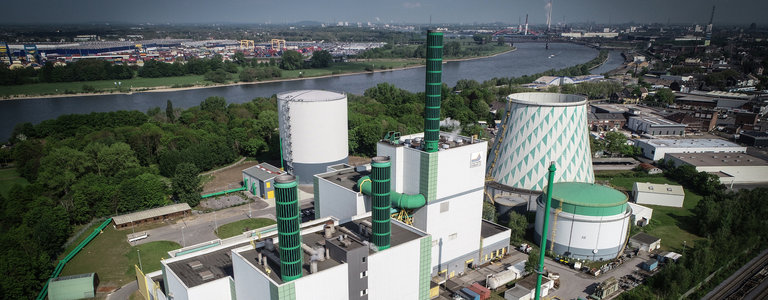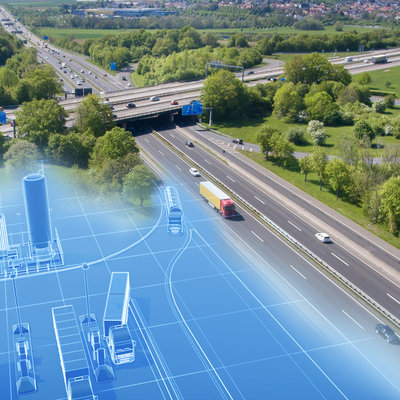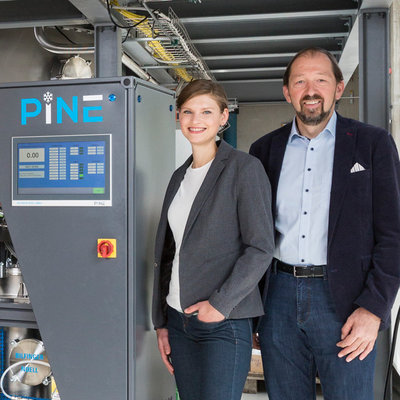
Mastering the Energy Transition
How technology and services help comply with environmental standards while increasing efficiency.
Following the Paris Climate Agreement in 2015, over 180 countries have to date set national climate protection targets aimed at limiting global warming to less than 2 degrees Celsius above pre-industrial levels. To ensure these targets are met, numerous national and international directives, laws and regulations have been passed. The energy-intensive nature of the process industry means it has been significantly impacted by these regulations.
As a reliable partner to the process industry, Bilfinger offers a variety of technologies, processes and services to help customers overcome challenges in making the transition to renewable energy. To this end, we rely on a range of technologies that reduce energy consumption and greenhouse gas emissions from industrial plants. The Bilfinger portfolio includes products and services for boosting energy efficiency, harnessing and storing renewable energy, flue gas purification, carbon capture and utilization, use of liquefied natural gas as well as waste-to-energy systems.
Increased efficiency
The Duisburg public utility company’s thermal power station simultaneously generates electricity and district heating. In the past, the generation of heat and power was linked, which had a negative impact on profitability. When district heating consumption is high but electricity use is low, power has to be sold below the market price. Bilfinger’s solution was an innovative two-zone district heating accumulator, which makes it possible to decouple the production and consumption of district heating and electricity, ensuring that the plant operates more efficiently.
Three questions for Duncan Hall

As Chief Operating Officer, Duncan Hall is driving the concept of the energy transition to renewables at Bilfinger.
Mr. Hall, the process industry has been particularly affected by the transition to renewable energy. What can Bilfinger do to help its customers meet the challenges that go with it?
When it comes to industrial plants, there are three approaches to meeting climate targets: switching from fossil fuels to renewable energy sources, further increasing energy efficiency, and scrubbing or preventing environmentally damaging emissions. In each of these fields, Bilfinger draws on multifaceted expertise and many years of experience with the relevant technologies.
How can we as a service provider respond to these diverse needs?
We mobilize our corporate units to pool available expertise and jointly tap the relevant markets. We put together specialist teams that focus intensively on such key topics as energy efficiency, flue gas purification, CO2 issues or the use of hydrogen. We strive to support, advise and guide our customers through all requirements relating to the energy transformation. At the same time, we continue to further hone our product portfolio.
What opportunities for future business development do you see opening up as a result?
The changes in energy supply will remain a central issue for years to come across the globe. The market for smart solutions geared to tackling the associated problems will continue to grow in the future, which will in turn present great opportunities. That means our chances of making our mark as a leading supplier in this sector are good.
Harnessing renewable energy
A central question that hangs over the use of wind and solar power plants is how to store excess energy. Together with Siemens Gamesa, Bilfinger built a steam power plant with a heat storage system in Hamburg. The facility stores and reconverts electricity generated by wind power. Rock-fill heated by the electricity acts as a storage system. The heat stored in the rock can be used to drive a generator’s steam turbine, converting the energy back into electricity.
Reducing CO2
The steel industry is responsible for some of the highest levels of CO2 emissions. For every ton of crude steel produced in Europe, around 1.3 tons of CO2 are currently released into the atmosphere, while the global average is over two tons. Hydrogen provides the means to significantly improve this ratio. Which is why a leading steel producer has launched a pilot project at a plant in Germany. Bilfinger is on board as a consultant and will also provide additional expertise and services.
Increased efficiency
The Duisburg public utility company’s thermal power station simultaneously generates electricity and district heating. In the past, the generation of heat and power was linked, which had a negative impact on profitability. When district heating consumption is high but electricity use is low, power has to be sold below the market price. Bilfinger’s solution was an innovative two-zone district heating accumulator, which makes it possible to decouple the production and consumption of district heating and electricity, ensuring that the plant operates more efficiently.


